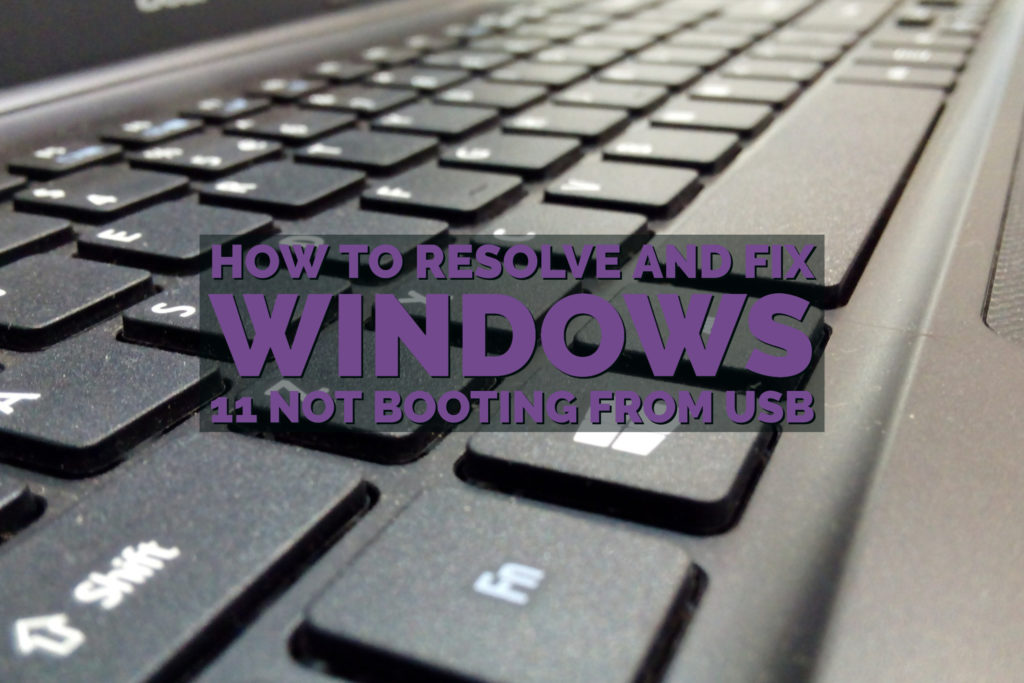It may happen that you cannot boot your Windows 11 from a bootable USB drive. Well, there is nothing to be panic about. Occasionally, this may be because you have not properly set up the boot setting. The method discussed in this article help you to fix the Windows 11 cannot boot from USB error:
Method-1: Manually fix the Windows 11 not booting from USB error:
This method consists of several steps as elaborated here:
Step-1: Check whether the USB drive is bootable or not:
If the bootable USB drive is not made properly or if it is damaged, then you cannot install Windows. Therefore, the first step is to check if the USB drive is bootable or not. On your Windows 11 computer, this can be checked with the Command prompt or the in-built Disk Management tool.
-
The below steps let you check this using Disk Management:
-
Firstly, insert a USB drive into a Windows 11 computer.
-
Now right-click the Windows icon and select Disk Management.
-
In this step, right-click the formatted drive and then go to Properties.
-
From the pop-up window, open the Volumes tab.
(On this tab, you can see the partition style of your bootable USB drive. Moreover, the removable media with bootable ISO would show status like “no volume” or very small little volume (like a few MB)).
An alternative option is to format your USB drive and again create a Windows Installation Media. However, this procedure is time-consuming. If you are confident that you have created the bootable USB drive correctly then you can verify its status in Disk Management.
Step-2: Confirm that your computer support booting from USB:
Certain computers are too old that they cannot support booting from a USB drive. To check whether this option is available or not, you can enter BIOS.
Follow these steps:
Enter BIOS, open ‘Boot Options’, and check ‘Boot Priority’.
-If the USB boot option is there in Boot Priority, then it means that your computer can support booting from USB.
-If the USB is not visible then it implies that the motherboard of your computer does not support this type of booting.
Step-3: Set Computer to boot Windows 11 from USB:
One of the reasons why booting from a USB drive failed is that you did not modify the boot order. By default, the computer boots from the internal disk, so you must place the bootable USB drive forward.
Follow these steps:
-
Restart your PC and press F2 when booting Windows. Doing this brings up BIOS.
-
Now find ‘Boot Options‘ and choose USB-HDD in the ‘First Boot Device‘ option.
-
Finally, confirm and save all the changes to activate Windows 11 booting from USB.
Step-4: Allow booting from a non-EFI device:
To allow booting from non-EFI devices, you have to modify the boot setting. Here are the steps:
-
First, follow the process mentioned in step 3 to enter the BIOS setting.
-
Search for the option i.e., ‘Compatibility Support Module‘ or ‘CSM‘. (Occasionally, this option is hidden until you disable Secure Boot.)
After you enable the CSM module and enable it to boot EFI + Legacy boot devices, there must be no hassles while booting your USB device.
Method-2: Creating a portable Windows USB drive:
In addition to setting up a bootable USB drive, you can implement a new idea i.e., creating a portable Windows USB drive. This type of drive clones the system drive of a computer.
The motive is that you can carry it wherever you go and use your OS on any device you like. If you are working from home, then you can make a portable USB drive.
Now whenever you connect the portable USB drive into a home computer and begin booting from it, everything which is installed and saved on a system drive of your computer can be used.
Here are the steps to create a portable Windows USB drive:
-
Install the EaseUS OS2Go on a Windows 11 PC, from the below link: https://www.easeus.com/utilities/ostogo.html
-
This software shows the used space of your system drive.
-
Now insert a USB drive whose size is bigger than the used space of the system drive.
-
Select the target USB drive and click ‘Next’ to continue. (EaseUS OS2Go would inform you that the subsequent operation would erase all data existing on your drive. Ensure that all the important data is backed up.)
-
Click the ‘Continue’ button.
-
The subsequent screen shows the ‘Adjust disk layout’ option. The default disk layout over the target drive will be identical to that of the resource drive. Also, you can edit the layout as per your needs. Tick that option if you are using an SSD as the Windows bootable drive.
-
Click ‘Proceed’. (Now the EaseUS OS2Go will begin creating the portable USB drive. Once the progress is 100%, the USB drive must be bootable.)
-
Now insert the portable Windows USB drive and turn on your computer.
-
Press the key F2/DEL/F10 to access BIOS.
-
Now select to boot from the USB disk.
Note: Make sure the boot mode (Legacy or UEFI) of your target computer and the portable USB are the same, else you cannot boot.
